Not big on taste and being low on the gourmand’s list are some reasons why the prized Kolkata fish is replacing basa, the frozen Vietnamese import, says Ismat Tahseen
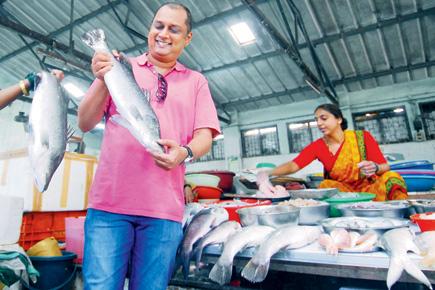
To market, to market...to buY a fresh BHETKI: Food blogger Kalyan Karmakar chooses a bhetki from the bustling Khar fish market. The fish is bought by weight and the price is roughly R1,000 per kg, depending on the size. Pics/Sameer Markande
A fish by any other name doesn’t taste as good, if the proverb were to be tweaked! For the whole trend of the Vietnamese basa fish (also often alluded to in jest by foodies as a ‘characterless’ catch) that jumped onto menus since a few years for its cost effectiveness, is no longer the fin of choice in city eateries. Upto even a few months ago, chances are if you stepped into a Pan-Asian, Indian or even Continental eatery, this was the fish they’d serve in a flourish on your plate, but with discernng tastebuds today, that’s no longer so. Enter its successor, the bhetki.
ADVERTISEMENT
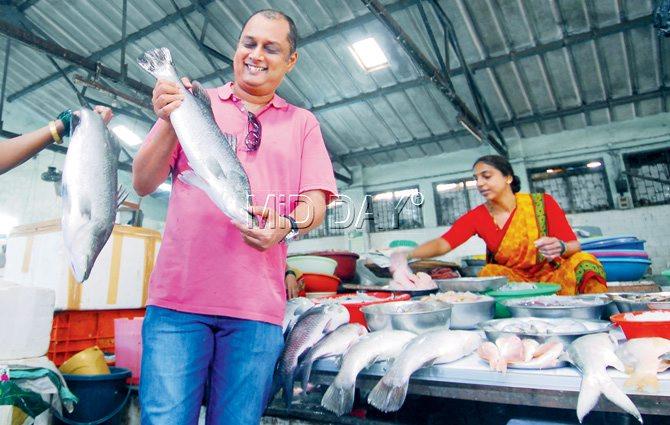
To market, to market...to buY a fresh BHETKI: Food blogger Kalyan Karmakar chooses a bhetki from the bustling Khar fish market. The fish is bought by weight and the price is roughly R1,000 per kg, depending on the size. Pics/Sameer Markande
Why it’s such a good option
Chef Kayzad Sadri of the InterContinental Hotel, Marine Drive, minces no words when he says, “Over 70 per cent of our customers today say, ‘if it’s basa we don’t want it’. They prefer the bhetki (also known as Barramundi) due to its sheer taste, so it’s not so much about price (bhetki is Rs 800 a kilo while surmai would be Rs 700 a kilo). I think bhetki is a great fish, very light and more assertive in taste without being overpowering like say, the mackerel. It’s also versatile, you can do so much with it — deep fry it , pan-sear it, make a curry out of it or even mince it to add to your dimsum filling.”
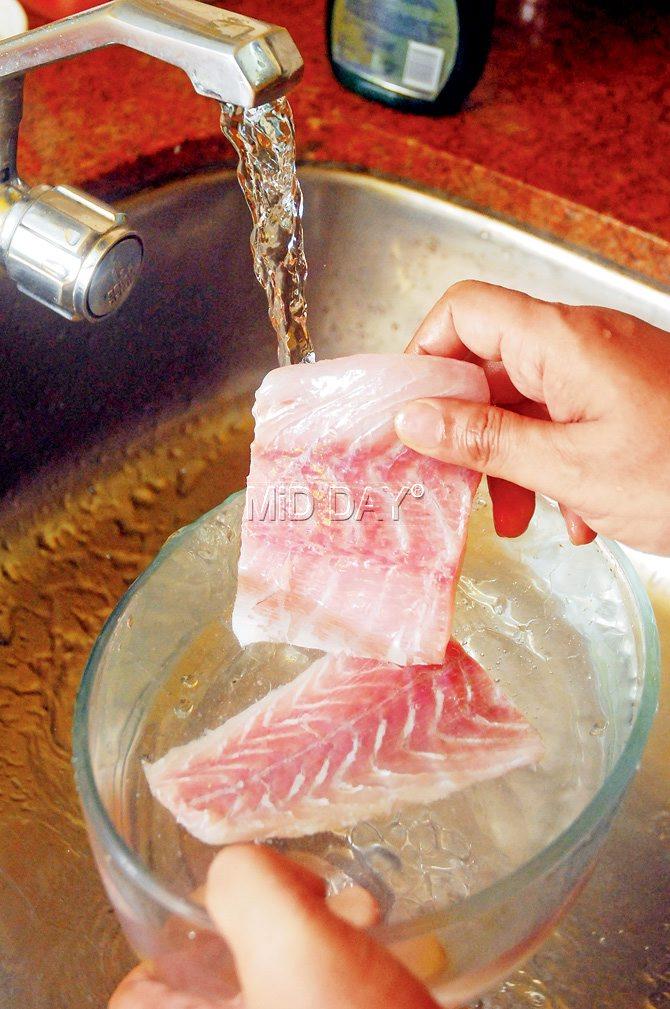
Wash the filets well
For city-based food blogger Kalyan Karmakar too, the bhetki is the fish of choice and not just because he is Bengali. “Pomfret and surmai are expensive fish and I would prefer this Bengali freshwater fish. In Bengal, it’s a favourite and had two ways — people have it as the first meal before setting out for work in a light fish curry called ‘kalia’. They also make a doi machh (curd-based) gravy out of it. And the other is more elitist, where it’s served in clubs and weddings as a breadcrumb-covered fish fry. Just like how rawas was used in practically all fish dishes, in Kolkata, it was the bhetki,” he says. And of late in Mumbai, there has been a move to consume more bhetki owing to so many reasons. “Not surprising. The fish is cheaper, it has great taste and is easily available — all the reasons that were earlier accredited with the basa,” adds Kalyan. So what led this, anyway?
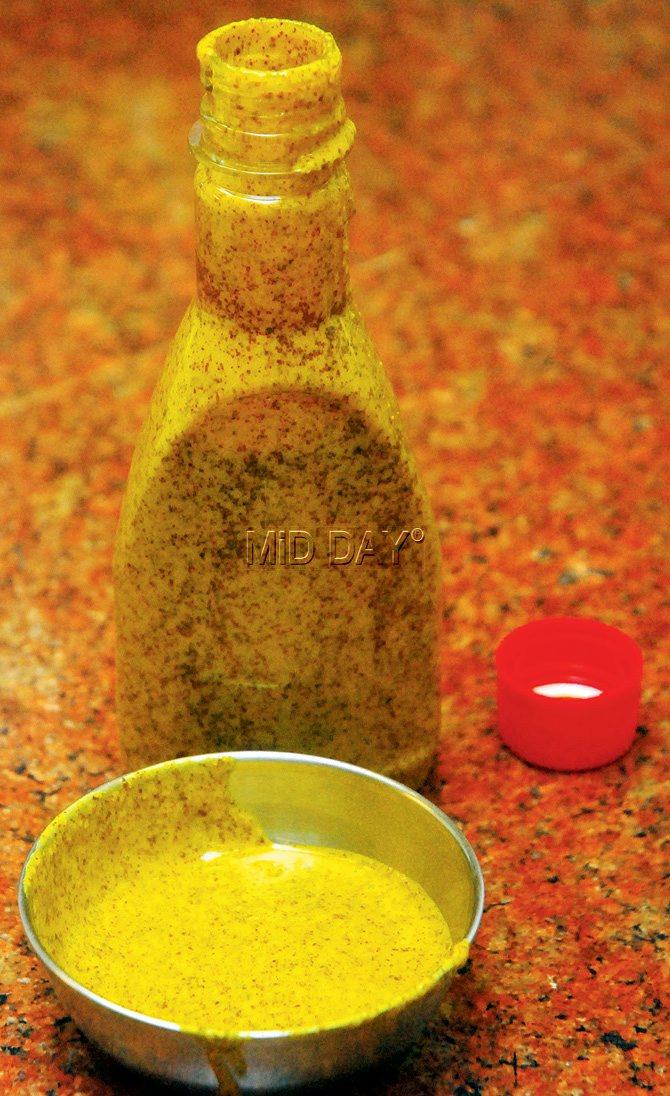
For the marination, pick up a bottle of the Bengali Kasundi mustard
Why basa was a letdown
“It’s the fish snobs who couldn’t really take to the taste of the basa,” states Kalyan, adding, “And I’m not just talking about Goans or Bengalis who have grown up on a fish diet, who have a problem with it. With a majority of people more well-travelled today, more educated on different foods and who know what their tastebuds want, there’s no appeal in it.”
Arpana Gvalani, owner of Gostana, at Bandra, says she would never use the basa on her menu. “People hadn’t really taken to it as it was very bland. I see it being served in so many places in the city, but I believe there is no shortcut to taste and with the customer being so discerning with what’s on his plate, I haven’t considered it so far and won’t start,” she declares.
 Add the mustard onto the fish and let it marinate for half an hour. An optional touch is to drizzle a little mustard oil on top for an authentic Bengali taste
Add the mustard onto the fish and let it marinate for half an hour. An optional touch is to drizzle a little mustard oil on top for an authentic Bengali taste
An import from the Mekong River in Vietnam, the basa is a bottom-feeder and a couple of years ago it made its way onto the Indian culinary scene, replacing the pricey pomfret and surmai in dishes. No longer so, agrees Siddhartha Bose, director at city-based Bengali eatery Bhojohori Manna.
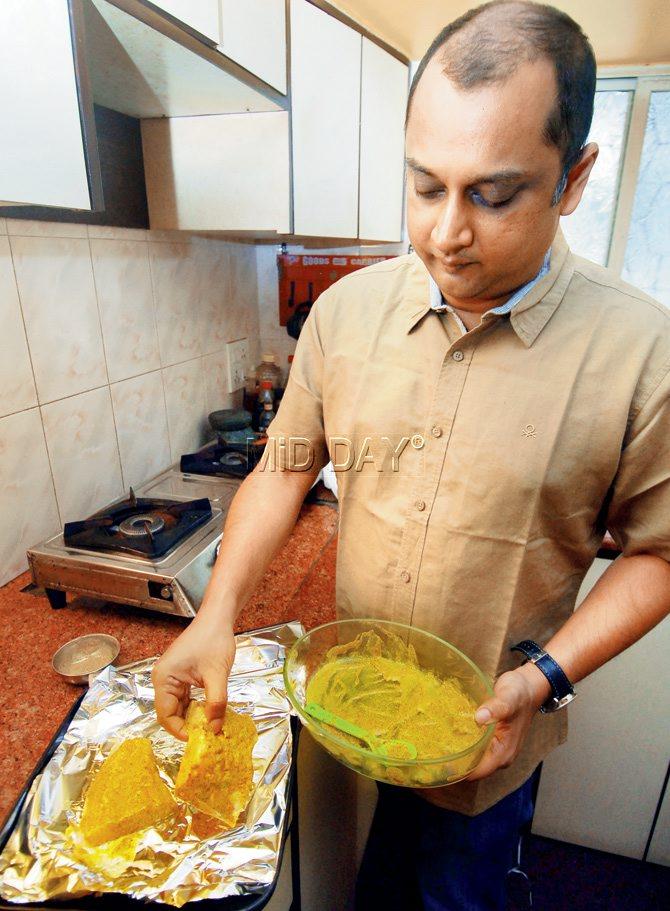
Now, place it on foil (traditionally, banana leaves are used, but you may also use foil as this is more easily available)
“Yes, at one time it was the choice for restaurateurs as it could remain fresh even after it was frozen and packaged, was economical and could adapt to whatever cuisine you made it in — Indian, Thai, Chinese or Continental.
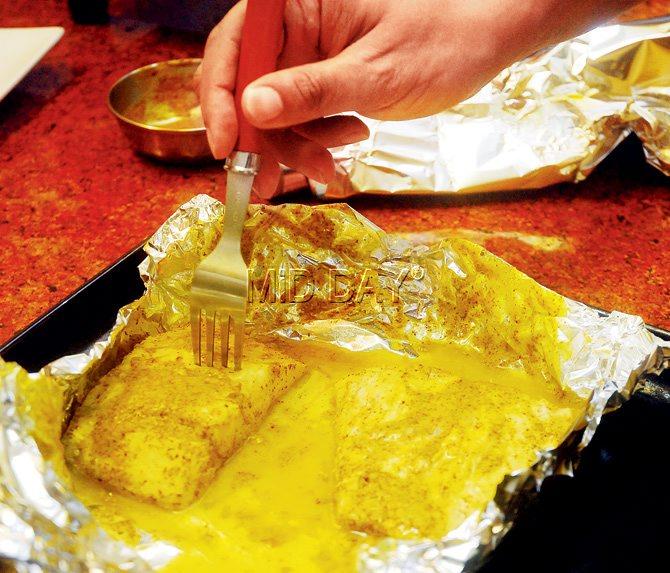
Once done, insert a fork in it to see if it comes out clean
But people quickly gave it a thumbs-down. We couldn’t sell it at any of our eateries in Kolkata, inspite of it being cheaper. I have never liked it; I find it extremely bland and far from enjoyable. On the other hand, the Kolkata bhetki is a prize fish and I see it increasingly crossing over onto the menus in Mumbai too.”
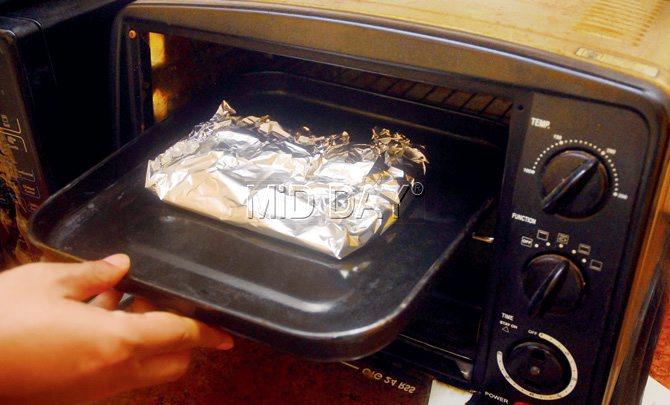
Place it in the oven for 15 minutes
He has a forewarning, “Watch out for the Hilsa and Katla fish, too. There’s a slow but rising trend where fish from another region is being cooked in local spices and preparations,” he says. So what’s next, a mustard pomfret? Bon appétit to that!
 Subscribe today by clicking the link and stay updated with the latest news!" Click here!
Subscribe today by clicking the link and stay updated with the latest news!" Click here!







